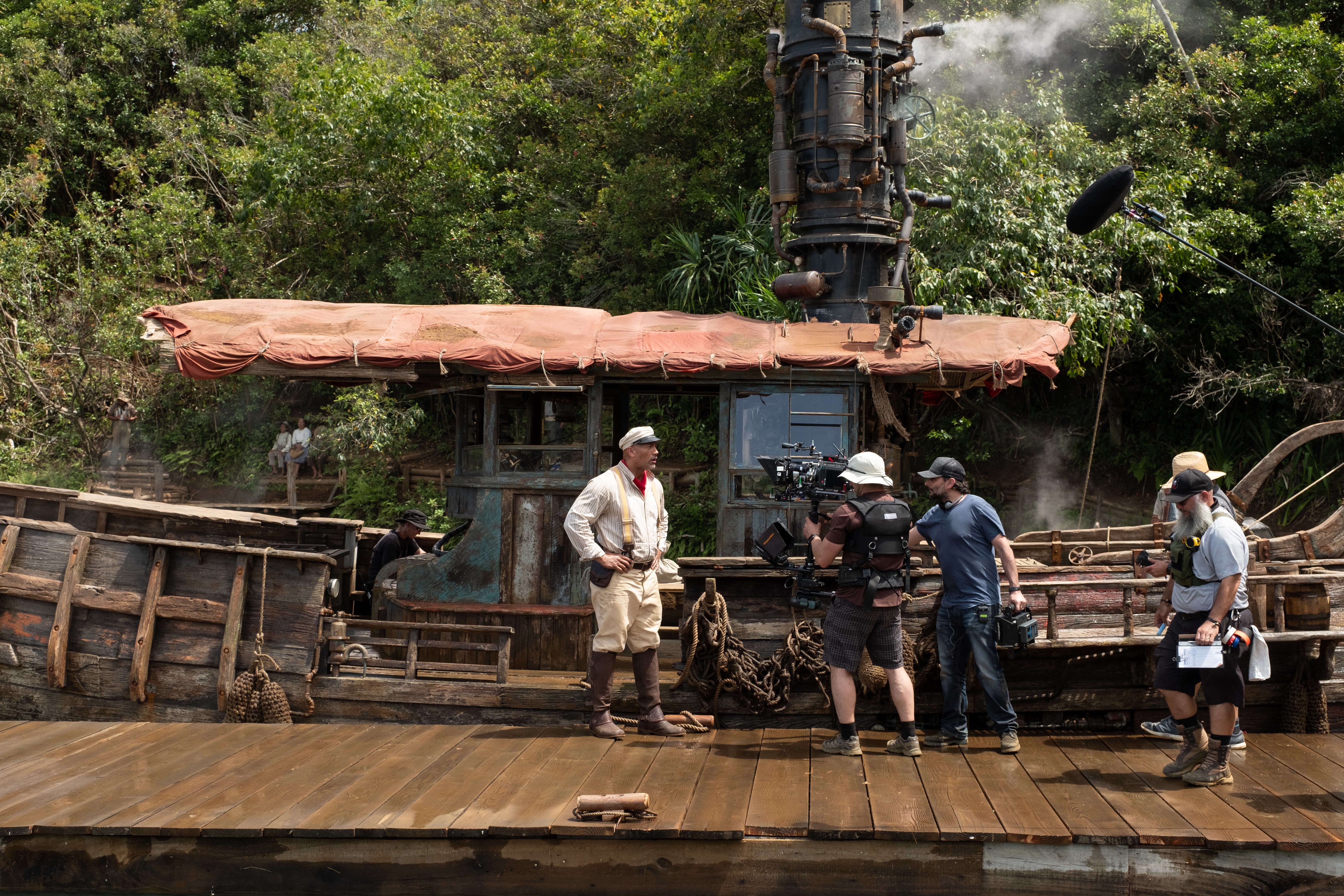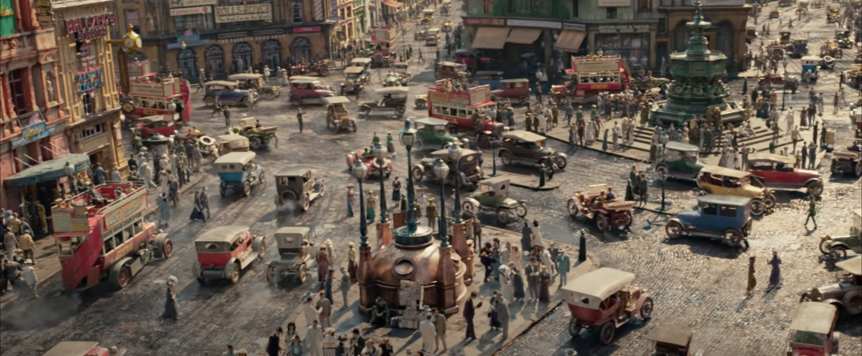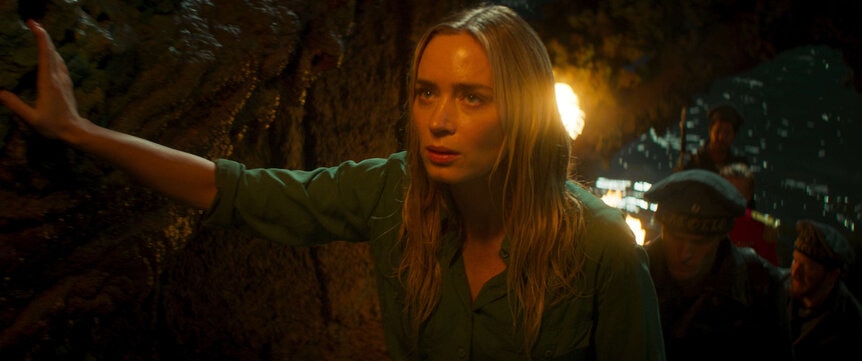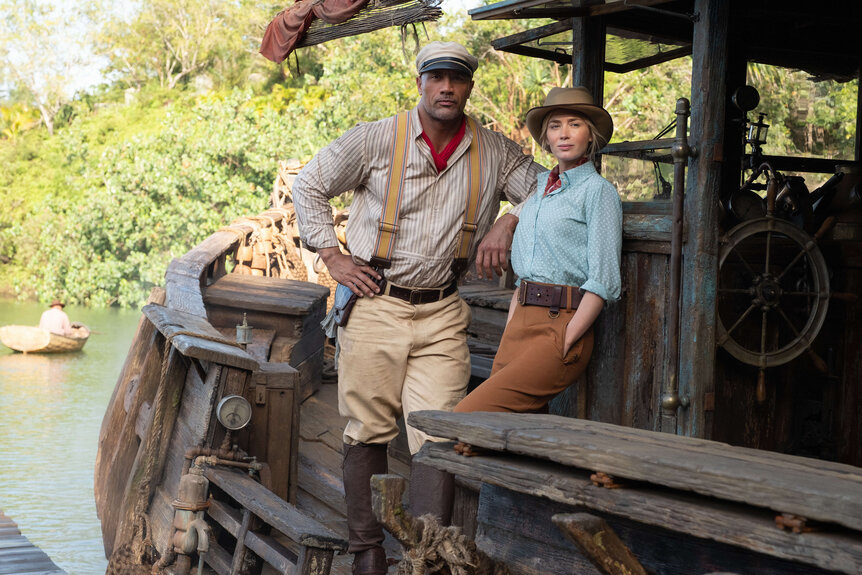Create a free profile to get unlimited access to exclusive videos, sweepstakes, and more!
'Jungle Cruise' DP says the movie harkens back to a bolder era of filmmaking

Disney's Jungle Cruise movie adaptation plainly wears its cinematic influences on its sweat-stained sleeves. From the very first trailer released in the fall of 2019, it was obvious that the film (now playing in theaters and on Disney+) was aiming for a blockbuster sweet spot between John Huston's The African Queen and Steven Spielberg's Indiana Jones franchise. It certainly achieves that goal with a period setting, classic love story, and heated race against time for a mystical MacGuffin.
Speaking with SYFY WIRE over Zoom, the project's main cinematographer, Flavio Labiano, reveals that he and director Jaume Collet-Serra wanted to harken back to "those adventure movies that take you somewhere and when you finish the movie, you're like, 'Wow, I have to go to work tomorrow? What am I doing with my life? Why am I not there?'"
Labiano spent a good chunk of his youth at the movie theater, watching epic films like The Man Who Would Be King, The Wind and the Lion, and Apocalypse Now. "I also think it has to do with nostalgia — the survival of nostalgia and your childhood," he explains. "Every movie was like a journey, every movie had its own music, and every movie had its own [identity]."
***WARNING! The following contains certain plot spoilers for the film!***
The DP also states the goal was to steer the ship (pun intended) away from the usual predictability of modern-day studio releases. "I think back then, they were... I don't want to say braver, but they were more original and probably more ambitious in how [they told] a story. I still miss them."
He continues: "We were not afraid in terms of, 'OK, we're gonna put a submarine [in the Amazon] and there's a torpedo.' We tried to shoot stuff that people haven't seen before, which is kind of hard. I think the scope of the movie is what makes you think big. We were always thinking big; we weren't trying to cut corners or to try to do things easier. We were trying to challenge it and trying to surprise ourselves as well."
That spirit of ingenuity may have come from the fact that Labiano got to check out the Disneyland attraction before principal photography commenced. "It was pretty incredible that someone did that in the '50s with all the hydraulics," he adds. "I imagine back then it was something really incredible to watch. But yeah, it had that kind of naive atmosphere. It was really good."
Despite the overt supernatural and swashbuckling elements, the director of photography believes that Jungle Cruise has more in common with the romanticism of Golden Age Hollywood than it does with the pulp-inspired pastiche of Indiana Jones. In particular, he highlights the movie's central relationship between headstrong physician Lily Houghton (Emily Blunt) and wisecracking skipper Frank Wolff (Dwayne Johnson).
"You can compare it to Indiana Jones because there's a lot of action scenes and a lot of [exotic locations], but we were telling a love story in this movie," Labiano says. "It's closer to The African Queen, where you meet Bogart's character, who is a drunk scumbag and you put him with a nun [played by Katharine Hepburn], and they both have to go on one boat somewhere. So, this is the same idea — you get the preppy and posh British [woman] with someone like Frank."
Unlike The African Queen, which actually filmed on location in Africa, Jungle Cruise set up its main hub of operations in Atlanta after a brief stint in Hawaii for wide shots. "Being a big movie, we had a lot of preparation time, which you never get," Labiano continues. "So, we could actually prep the movie pretty well... We shot the whole movie in a parking lot in Atlanta. We built this tank full of water surrounded by blue [screen] and we just shot the whole movie there."
Even with so many visual effects shots involved with the tentpole, the cinematographer strived for as much realism as possible: "I was trying to recreate the exotic places where it's very hot and very humid ... We tried to recreate those hours and those landscapes and how the sun hits and how the sun reacts and bounces all over and makes that sense of heat and sweat."
Color also played a big part in "trying to show emotions," Labiano reveals. "I wasn't afraid because we had the sources and the time and the money to go there. So we just said, 'Ok, let's use as much color as we can and let's try to use the color to tell the story.'"
For instance, the cinematographer found himself gravitating toward magenta — a color seldom seen in big-budget productions like this — for the main adventure through the jungle. "I didn't want to go into the greens, which most people end up doing," he says. "We said, 'Let's go with something very organic.' I think magenta represents that — it's the color of the inside of a body and that whole meat, Earth/organic thing."
He also played against convention when lighting for London where the story begins and ends: "We didn't want to do one of those sad, cool, cold, foggy Londons that everybody does. Every time you see London [in a movie] it's winter and it's foggy and it's blue. I used to remember London in the summer. It was a beautiful place to be in the summer. It's very colorful and it's a joy of a city. We started with that; we didn't want to photograph London as people always do."
This isn't the first collaboration between Labiano and Collet-Serra. The two have worked on several films together, including two Liam Neeson thrillers — Unknown and Non-Stop — and 2016's The Shallows. Given that the latter almost exclusively took place in the water, Labiano decided to hand off Jungle Cruise's wetter responsibilities to seasoned underwater cinematographer Ian Seabrook (Old).
"Both him and Jaume had done a picture called The Shallows with Blake Lively and he wasn't a huge fan of the underwater work process on that film," Seabrook recalls. "So, he was hoping that it was not gonna be the same."
"On The Shallows, we had a lot of underwater [sequences]," Labiano adds. "Here, we only had one scene and on The Shallows, we had underwater every single day. Every single day we were shooting that and at the end, you learn a lot about it. How much the water magnifies, which lenses work, which lenses don't work... But these guys do it for a living and they're fantastic people to work with."
Seabrook was brought on board (again, pun intended) to help shoot the climactic sequence in which Lily and Frank discover the sunken temple containing the tree that produces the Tears of the Moon.
"Jaume basically outlined the broad strokes of what the sequence was. I saw a few storyboards — not very many — and then we went to work," Seabrooks says. "Jaume came over to do the work with Dwayne and Emily and then when we working with the stunt personnel, he wasn't present. But he would watch all the dailies and stuff, so I would go over and check with him and make sure everything was to his liking. I got a hug out of him at the end of the show, so I'm assuming that it all went well."
Seabrook was the perfect person for the job due to his lifelong love water-based filmmaking: "When I was younger, I watched the Disney nature documentaries and a lot of James Bond movies [like] Thunderball and stuff like that. I've always been interested in underwater stuff." Funnily enough, those Disney documentaries were the direct inspiration for the original Jungle Cruise ride.
While the true Amazon River is full of mud and sediment that makes the water cloudy, Seabrook had to use a bit of creative license in order to make sure both characters were visible.
"If you look at the film, the water is blue. The water in the boat when they go down, it's kind of brown," he explains. "But, you know, it's a Disney film — the water needs to be colorful. If they were swimming down into a muddy river, you wouldn't see anything and then it would like, 'Yeesh.' That's a different sequence entirely. Claustrophobic, can't see and stuff. The whole point was to be able to see things somewhat."
Since filming in the South American river would have been both impractical and expensive, the crew relied on a massive water tank erected in the parking lot of Black Hole Studioz in Forest Park, Georgia.
"I remember I got in the water for the scene where they jump in the water initially and he's trying to convince her to swim down. We're at the exterior tank and there's current flowing, so it's pushing against me [and] I'm sort of trying to fin and stay in one place," Seabrook remembers. "Dwayne gets in and he goes, 'How you doin', brother?' and he gives me a pat on the shoulder. It practically sent me sideways."
"There was a lot of blue screen in the movie," Labiano concludes. "But you learn how to separate the faces from the blue and you end up learning how to work with so much blue every day… A lot of this came from The Shallows because... we shot the whole movie in a tank as well. So, Jaume and I learned a lot about how to actually do that, so it was a good experience and it worked really well on Jungle Cruise."
Jungle Cruise is now playing in theaters and on Disney+ Premier Access. The film sailed to the top of the box office during its opening weekend with a little over $34 million in North America. It also brought in $27.6 million internationally for a global debut of $61.8 million.




























